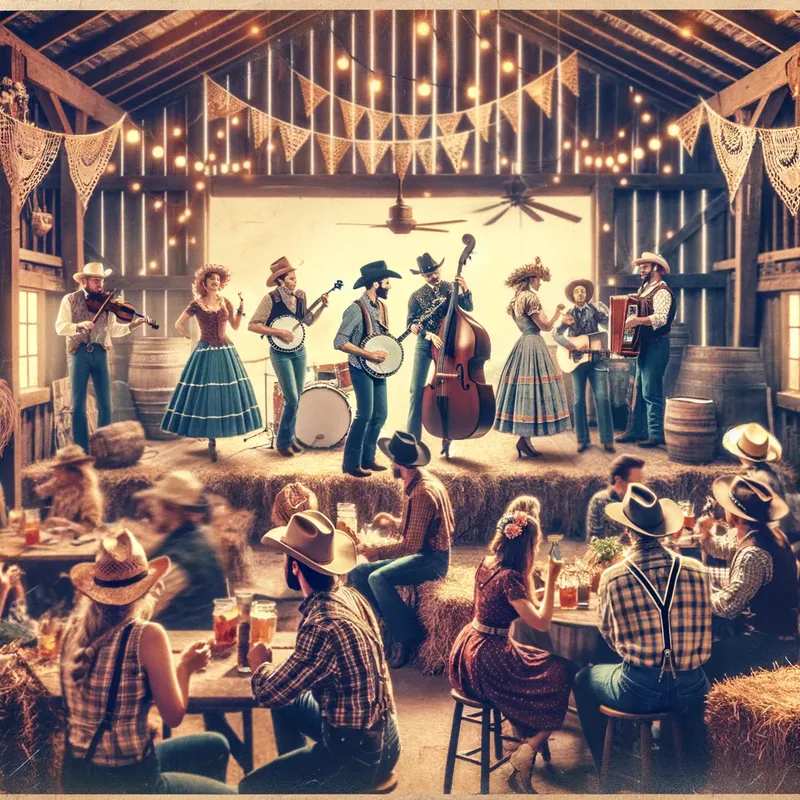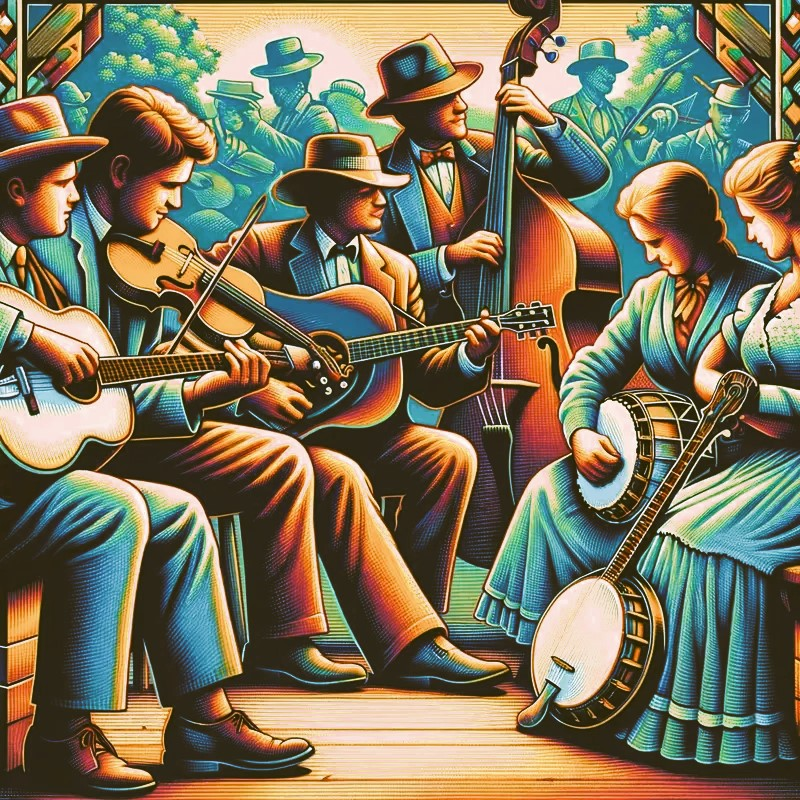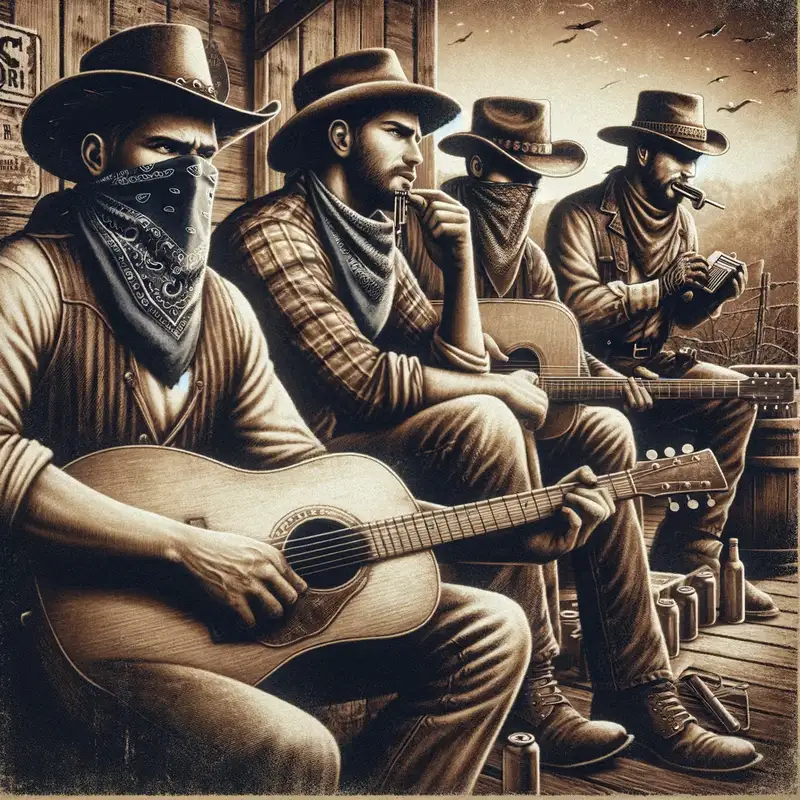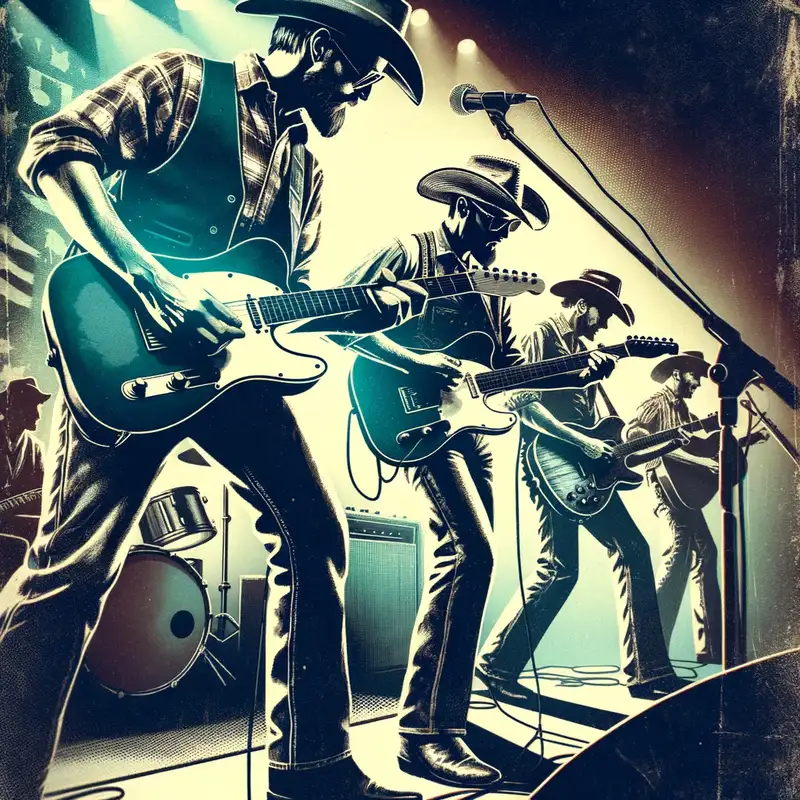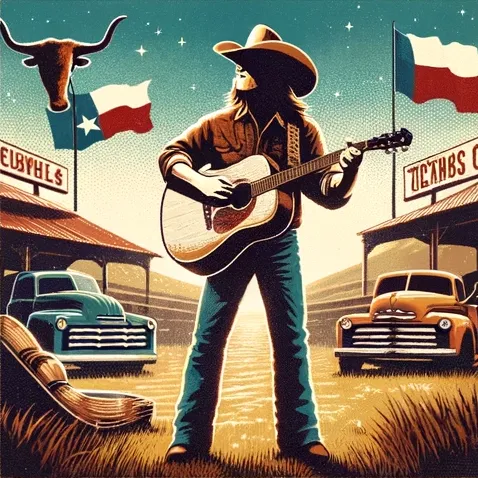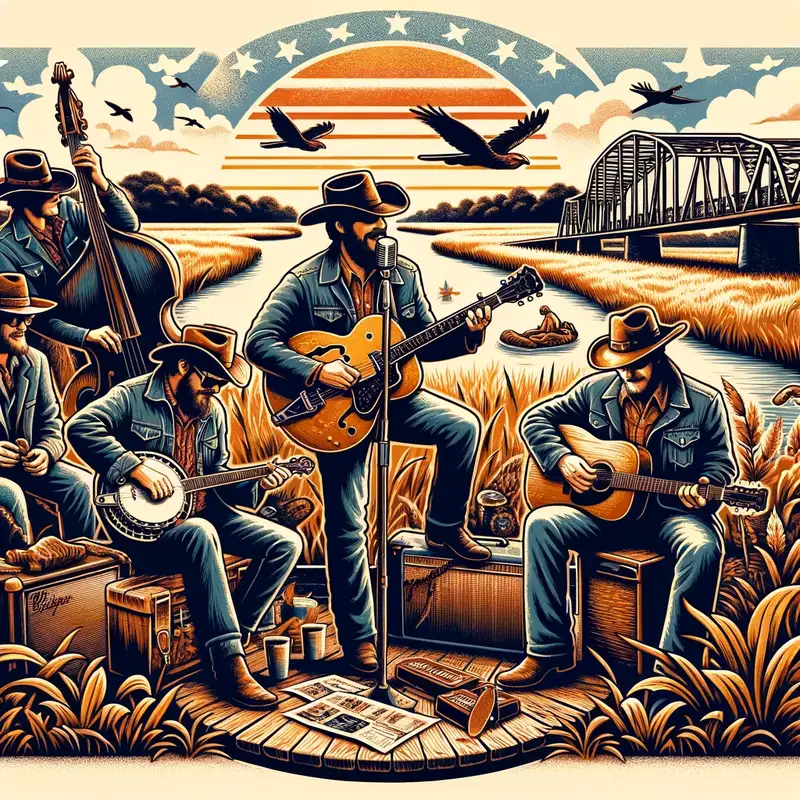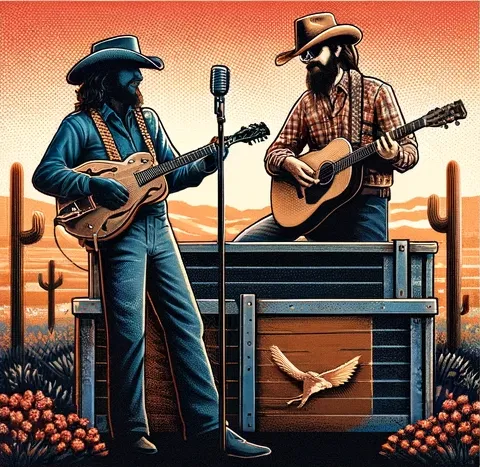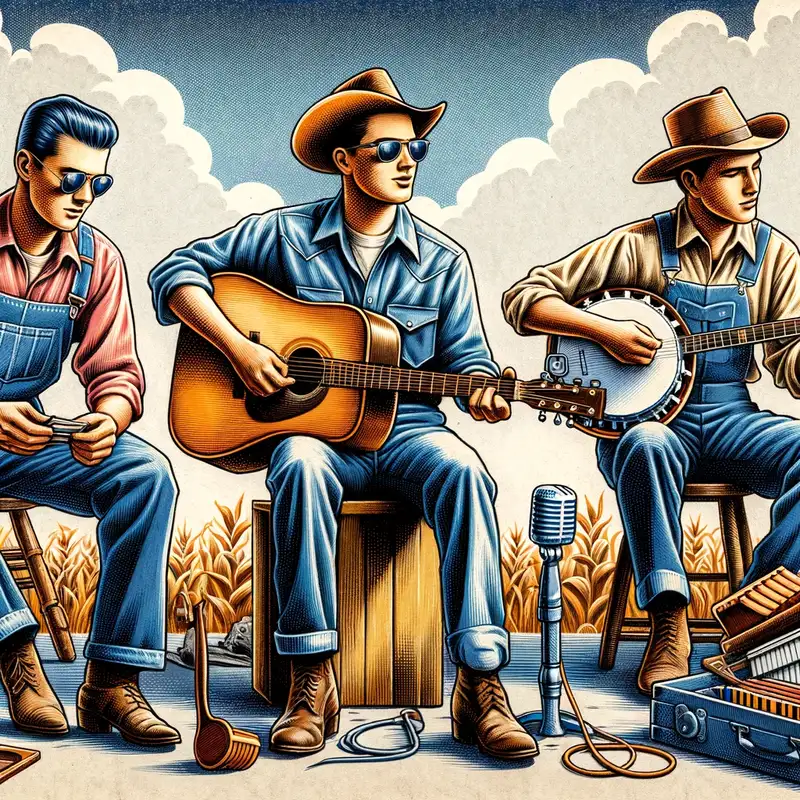Country Music
Country music, often referred to as “country and western” or simply “country,” is a genre deeply rooted in the folk music traditions of the Southern United States. Country, at its core, is about storytelling. It tells tales of love, loss, hard work, and heartbreak, all with a characteristic twang.
Table of Contents
Subgenres
Country music, with its roots in American folk traditions, has diversified significantly over the years, branching out into a variety of subgenres. Here are some of the most prominent ones:
Traditional Country
Traditional Country music harks back to the genre’s roots, featuring instruments like the acoustic guitar, fiddle, and steel guitar. It is heavily influenced by early folk and Western music, as well as the hillbilly music of the 1920s.
Bluegrass
Rooted in Appalachian musical styles, Bluegrass is known for its rapid tempos and complex, improvised instrumentals. It often features the banjo, acoustic guitar, and fiddle, with intricate solos being a common hallmark.
Honky-Tonk
Honky-Tonk has its roots in the Western Swing bands of the ‘30s and ‘40s, characterized by a steady rhythm suitable for dancing. The instrumentation is similar to traditional country, but with a stronger rhythm section. Lyrics often focus on hard living, love, and loss.
Outlaw Country
Emerging in the 1970s as a reaction against the polished “Nashville Sound,” Outlaw Country artists like Waylon Jennings and Willie Nelson sought to bring back a raw, gritty edge to country music. This subgenre often explores themes of lawlessness and rugged individualism.
Nashville Sound
Developed in the 1950s and 1960s, the Nashville Sound was aimed at making country music more commercially viable. It incorporates elements of pop music, including orchestral strings and smoother vocal arrangements.
Country Rock
A fusion of rock and country music, this subgenre emerged in the late ’60s and was popularized by artists like The Eagles and Linda Ronstadt. It combines the storytelling aspects of country with rock music’s aggressive instrumentation.
Country Pop
This is a subgenre that brings together the melodies and hooks of pop music with a country influence. Artists like Shania Twain and Taylor Swift have brought country-pop into the mainstream.
Texas Country
Also known as “Red Dirt” music, Texas Country blends traditional country with elements of rock, folk, and blues. It has a more independent, “rough around the edges” vibe compared to the polished production of Nashville.
Americana
Americana is a contemporary subgenre that incorporates elements of various American roots music styles, including country, roots-rock, folk, bluegrass, and R&B. Artists in this genre often focus on authentic storytelling and instrumental virtuosity.
Bro-Country
A relatively modern subgenre, Bro-Country is characterized by its focus on partying, attractive women, and pickup trucks. Artists like Luke Bryan and Florida Georgia Line have popularized this style, which has been both commercially successful and critically divisive.
Alt-Country
Also known as Alternative Country, this subgenre blends the conventions of traditional country with a variety of other musical influences, including punk, rock, and folk. Artists like Uncle Tupelo and Ryan Adams are prominent figures in this genre.
Origins & Evolution
1. Roots in Folk and Blues:
Country music’s roots can be traced back to the folk music brought by British and Irish immigrants to the Appalachian region. These sounds mingled with the blues rhythms of African Americans in the South.
2. 1920s – Birth of Commercial Country:
The 1920s saw the first commercial recordings of “hillbilly” music, a precursor to modern country. The Grand Ole Opry, established in the 1925, became a significant force in promoting country music.
3. 1940s-50s – Honky-Tonk and the Nashville Sound:
Post-World War II, the “honky-tonk” sound, characterized by electric instruments and a shuffling rhythm, emerged. Later, to combat the rising popularity of rock ‘n’ roll, the polished “Nashville Sound” was developed.
4. 1960s-70s – Outlaw Country and Countrypolitan:
Rebelling against the Nashville establishment, artists like Willie Nelson and Waylon Jennings forged the “outlaw” country movement. Meanwhile, “countrypolitan” – a more urban style with pop-influences – also gained traction.
5. 1980s-2000s – Neo-Traditionalists to Pop Crossovers:
Artists like George Strait and Randy Travis revived traditional sounds. The late 90s and 2000s saw many country artists like Shania Twain and Taylor Swift achieving mainstream pop success.
6. 2010s-Present – Bro Country and Beyond:
The 2010s saw the rise of “bro country,” focusing on themes like partying and love.
Notable Figures in Country Music
1. Hank Williams:
Often regarded as the “father of contemporary country music,” Williams’ soulful lyrics and charismatic performances set the tone for generations to come.
2. Dolly Parton:
With her incredible songwriting skills and distinct voice, Parton became one of the most influential female artists in country music.
3. Johnny Cash:
The “Man in Black” is celebrated for his deep baritone and songs that touch on love, faith, and redemption.
4. Garth Brooks:
Brooks brought a rock ‘n’ roll energy to country, becoming one of the best-selling solo artists in U.S. history.
5. Loretta Lynn:
Lynn’s songs, rooted in her experiences as a woman in Appalachia, paved the way for many female artists in country music.
Cultural Impact
Country music, with its tales of real-life experiences, has always resonated deeply with its listeners. Its themes of love, loss, joy, and pain are universal, making it relatable across boundaries. Festivals like “CMA Music Festival” and “Stagecoach” draw fans from around the globe.
